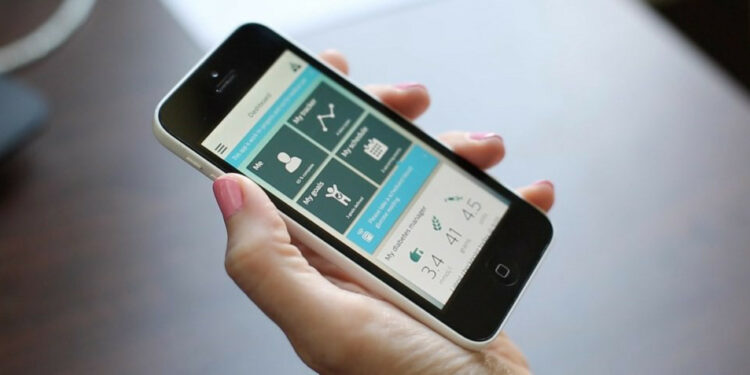To develop a medical application that will be in demand, there are many different factors to consider. Especially considering the growing criticism of programs that kill time, distract from real life and are not useful. Of course, no one denies the usefulness of medical software. After the pandemic, people trust health applications more and more. More and more startups look for healthcare software development services.
Today 86% of Americans use mobile platforms to track their health. 79% use wearable devices, like Apple Watch or similar. In other countries, the picture is slightly different, but the trend is the same.
The market opportunities are clear, but how do you get the people to really start using a program? This is where the main trends in software development come in hand. Read more about them in this article.
ALT: A hand with a smartphone with a medical app on the screen.
How People Use Health Software
Trends emerge where new customer needs (or new technologies that meet those needs) emerge.
People use medical apps:
- as a reference or tutorial;
- to quickly provide information to the doctor;
- to compare prices, places, specialists;
- to track all kinds of biological information related to their condition. For example, asthma, blood sugar, menstruation;
- as a medical diary and reminder system;
- for education and training;
- to search for donors, doctors, nurses.
So, if people can use your software for one of those reasons, it can definitely survive on the market. And what are the main trends that one can deduct from these customers’ needs?
New Innovations Software Trends
The most important tendencies of the mobile health future are all somewhat related. They emerged after the pandemic, and will continue going strong for a while.
1. AI in healthcare
Rapid diagnostics, analysis of rare diseases. Selection of drugs, development and search for molecules using digital libraries. These are just some of the areas of application of AI. Together with innovations in sensorics, AI allows for remote examination of a patient.
Yet, the goal is not to replace medical personnel with a digital doctor. It is more to support medical expertise in the choice of treatment methods.
2. Remote Monitoring
Remote monitoring tools include a mobile device and an analysis module. They allow you to track patients with chronic diseases. For example, diabetes, oncological and cardiovascular diseases. The monitoring is completely done outside the hospital ward.
One successful example is a tool called ResMed. It offers cloud-based devices for managing apnea, patients with asthma or breathing difficulties. The experts expect the market in this segment to reach nearly $ 16 billion by 2023.
3. Health Literacy Resources for the laypersons
The World Health Organization notes a quite direct relationship. It is between critical health indicators and population incompetence in health matters.
There are platforms which share information on common diseases. Besides viewing information materials and videos, users can consult with specialists. For example, on topics such as diet selection, preventive therapy, rehabilitation methods, and so on.
4. Smart clothing
For most of us, medical gadgets mean smartwatches, fitness monitors, and wrist-based heart rate monitors. But the market offers a lot of other products.
A promising niche is smart textiles for healthcare. You can weave electronics into clothes like Xenoma, Japan does. Or make blankets and pillows as German VISSEIRO. And even dressings like a project led by Dr. Ali Tamayola of the University of Connecticut, or shoes by Digitsole, France. They can perform specific functions of monitoring the physical condition and caring for the patient.
5. Services for the elderly
With the rise in chronic diseases, there will be an increasing need for alternative ways of caring for the elderly.
Discreet surveillance is at the heart of Canary Care’s business model. They allow older adults to remain independent for longer. Scottish Current uses gadgets to track vital signs and alert healthcare providers ad hoc. It is specifically done when a patient’s health is deteriorating.
Blockchain As Future Of Medical Research
Finally, blockchain should be totally mentioned in the list of trends. The use of distributed computing in medicine will help increase the security and safety of solutions in various areas. From IoMT to cloud hosting of these systems. Even the best crypto exchange is working on the blockchain basis.
On the basis of the blockchain, secure interfaces for the exchange of medical data will be popular. Which at the same time will maintain anonymity and follow legislation requirements. In 2017, the US FDA initiated a research project with IBM Watson to explore how this could work on practice.



